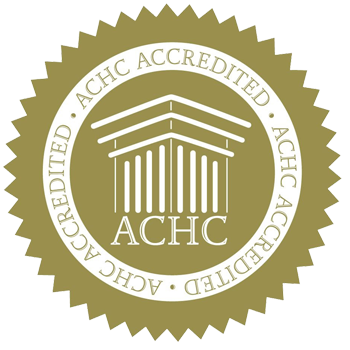H1N1 Flu
Most influenza viruses occur in birds and only a few strains make the transition to cause human disease. Changes in human influenza virus proteins results in human-to-human spread of viruses to which we are not immune. Influenza virus has 2 major surface proteins that are designated H (hemaglutinin) or N (neuraminidase). The H and N designation identifies different influenza strains from season to season.
The Spanish flu of 1918 was an H1N1 strain that caused the largest reported fatal pandemic in human history. The virus spread throughout the world in less than 1 year killing over 40 million persons. Typical influenza seasons in the USA are associated with 35,000 deaths predominantly in the frail elderly. The 1918 pandemic killed young healthy adults. The predominant mechanism of death in young adults was a severe viral pneumonia with bleeding in the lung.
Pandemics also occurred in 1957 (H2N2 Asian flu) and 1968 (H3N2 Hong Kong flu). The mortality in those years was 70,000 and 34,000 respectively in the United States.
The current Avian flu virus (H5N1) was first noted in a cluster of patients in Hong Kong in 1997. New outbreaks have occurred in 2003 and 2004 in 8 Asian countries. The mortality in more than 200 cases has been 50%. The complication most often found in these predominantly young adults was pneumonia similar to the 1918 Spanish flu. Person-to-person transmission was first reported in 2005 in Thailand where a mother and aunt died after exposure to a critically ill family member in a hospital setting. So far efficient human-to-human spread has not been observed.
Influenza infection causes an acute illness with fever, muscle aches and respiratory symptoms such as cough or sore throat. Patients may appear very ill even without complications. Nausea, vomiting, dehydration and secondary bacterial infection may require patients to seek medical help. Fluids, control of nausea/vomiting and antivirals could assist the majority of patients who need help. The virus can be treated with oseltamivir (Tamiflu) if treated early ie: 48 hours.
In most years, the medical delivery system has been able to provide this care without difficulty. The current challenge is to be prepared to handle the demand in a pandemic of H5N1 influenza.
In a July 2008 New England Journal of Medicine article, a team of researchers reported favorable immunogenicity and side effects for a whole virus H5N1 vaccine. It remains unclear which virus will cause a pandemic (ie: H9N2, H5N3, etc.). It may take 6 months to produce a vaccine in the event of a pandemic. Early therapy of viral sepsis with fluids and early treatment of secondary infections remain the most practical clinical goals.
References
- Bartlett, J.G., M.D. and Hayden, F.G., M.D. Influenza A (H5N1): Will It Be the Next Pandemic Influenza? Are We Ready? Ann Int Med. 2005; 143: 460-462
- Bartlett, J.G., M.D. Planning for Avian Influenza. Ann Int Med. 2006; 145: 141-144
- Starr, Isaac, M.D. Influenza in 1918: Recollections of the Epidemic in Philadelphia. Ann Int Med. 2006 145: 138-140
- www.health.state.ga.us. Georgia Division of Public Health web site. “Avian Influenza Information”.
- www.cdc.gov. CDC web site. Search A to Z Index for Avian Influenza.


